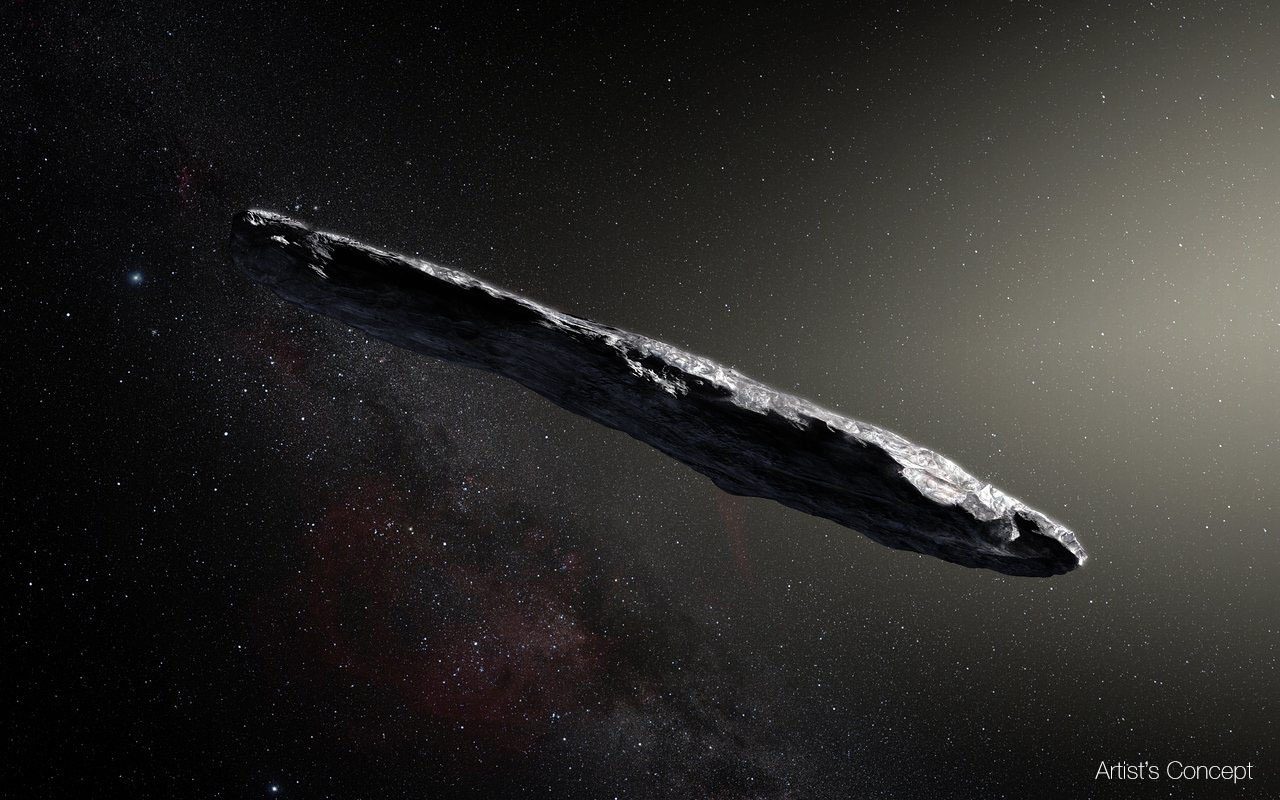
In 2017, the astronomical community was electrified by the discovery of the first recognized interstellar object, ‘Oumuamua. This revelation led to a flurry of research aimed at deciphering the nature and path of this celestial wanderer.
‘Oumuamua’s remarkable characteristics – which starkly contrast with any known bodies orbiting our sun – prompted scientists to consider how such an object could have come into existence. Recently, researchers Xi-Ling Zheng and Ji-Lin Zhou have employed numerical simulations to explore various configurations of solar systems that could give rise to objects similar to ‘Oumuamua. Their research indicates that solar systems featuring a single giant planet possess the requisite orbital mechanics to produce such entities, although additional explanations might still be necessary.
Zheng and Zhou shared their research findings in the Monthly Notices of the Royal Astronomical Society in February 2025.
The duo initiated their study by analyzing the known characteristics of ‘Oumuamua.
Visible to Earth’s telescopes for only a brief period in 2017, ‘Oumuamua exhibited highly variable brightness, fluctuating from bright to dim every four hours. This variability led astronomers to deduce that it was an elongated, cigar-shaped entity tumbling through space.
Two additional factors contributed to ‘Oumuamua’s uniqueness. Firstly, its surface appeared dry and rocky, reminiscent of asteroids found within our solar system. However, its orbital changes could not solely be attributed to gravitational forces – some other influence was at play.
Such trajectory alterations can sometimes be observed in icy comets. As they draw near to the Sun, the off-gassing from the melting ice creates thrust, modifying the comet’s course.

Somehow, ‘Oumuamua exhibited characteristics of both comets and asteroids.
One potential explanation, suggested in 2020, posits that ‘Oumuamua-like objects might form through tidal fragmentation. This occurs when a ‘volatile-rich’ parent body (like a large comet) passes at high speeds too close to its star, causing it to break apart into long, thin fragments. The intense heating during such extreme encounters can create an elongated rocky exterior while preserving icy material within. This unusual combination, not found in our solar system, could account for ‘Oumuamua’s trajectory adjustments despite its rocky nature.
This also offers insight into why such objects are rarely spotted in our solar system, as “ejected planetesimals undergo tidal fragmentation at more than twice the rate of those that survive (3.1% versus 1.4%),” the authors note. In essence, if the gravitational forces are suitable for tidal fragmentation, they are also likely strong enough to expel those objects from their original solar system.
Consequently, interstellar space could be teeming with dagger-shaped fragments of rock and ice (admittedly an exaggeration, but an entertaining thought for social gatherings).

The simplest stellar systems capable of causing such tidal fragmentation are those surrounding white dwarfs, which are the incredibly dense remnants of exploded stars. A white dwarf, surrounded by a belt of distant comet-like objects akin to the Sun’s Oort cloud, could regularly generate ‘Oumuamua analogues.
However, this process is amplified in systems that contain giant planets akin to Jupiter.
Exceptions occur with ‘Hot Jupiters,’ which are positioned closely to their stars and are less likely to interact with items prone to tidal fragmentation.
On the other hand, distant Jupiter-sized planets can effectively produce ‘Oumuamua-like objects, particularly when they follow eccentric orbits. Nonetheless, this scenario does not perfectly align with the origins of ‘Oumuamua because such interactions generally create less elongated fragments at a frequency lower than what would be anticipated for ‘Oumuamua-type objects.
The researchers conclude that planetary systems with multiple planets are more adept at generating interstellar bodies like ‘Oumuamua, although they also propose various alternative scenarios.
While a robust and plausible framework now exists to explain the creation process of ‘Oumuamua, the specific characteristics of the solar system that produced it remain a subject of ongoing investigation.
Xi-Ling Zheng and Ji-Lin Zhou, “Configuration of single giant planet systems generating ‘oumuamua-like interstellar asteroids.” Monthly Notices of the Royal Astronomical Society.









